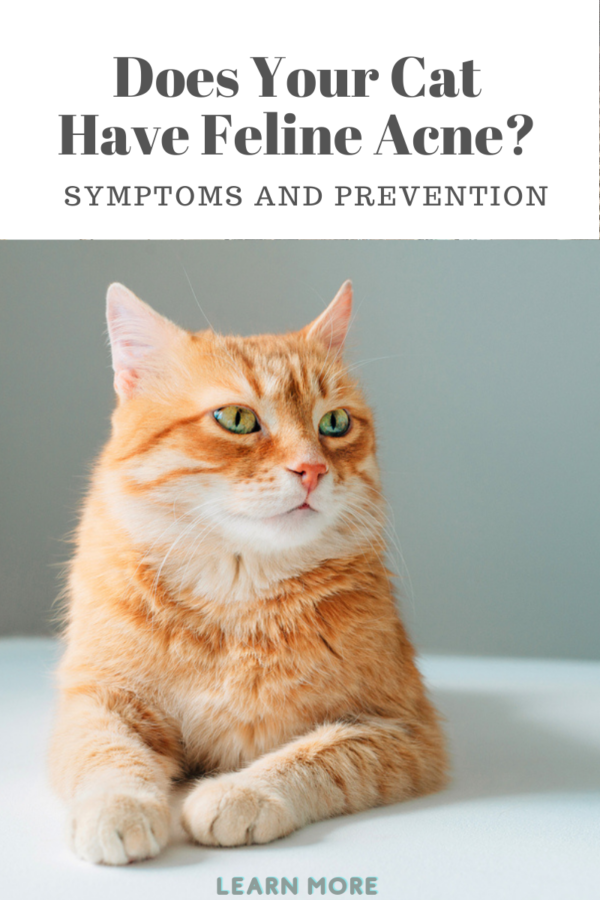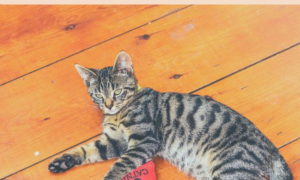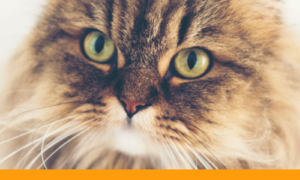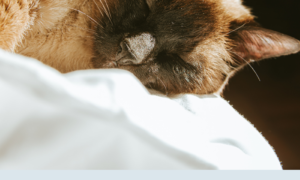A longtime client contacted me recently to cat sit Minnie and Mickey. The client indicated Minnie had something going on around his chin. Minnie had red open sores on his chin. She googled and discovered it was feline acne, a condition she wasn’t aware of previously.
Acne is no fun for anyone, whether animal or human. So…what is feline acne and what can we do about it? Read on…
Disclosure: This post contains affiliate links. We receive a small commission on goods purchased via these links, at no additional cost to you.
Causes
The exact cause is unknown. Factors associated with the development of feline acne include stress, a compromised immune system and poor grooming habits. Presence of other diseases or skin conditions that cause abnormally oily skin is another potential cause..
Characteristics
Feline acne is primarily found on cat’s chin and lips. The chin appears “dirty.” The acne is referred to as “comedones” and can develop into small abscesses, which can then break open and form crusts. In severe instances, draining tracts, hair loss and swelling may present on the chin.
Further, this may irritate the cat and he/she may begin to scratch at it, causing trauma and potentially secondary bacterial infections. This condition may appear just once in the life of a cat; it may come and go; or, it can remain for the life of the cat. It can occur in all breeds of cats, at any age and in both males and females.
Your veterinarian can diagnose feline acne via a skin scraping. A biopsyIs occasionally performed to rule out other conditions.
Treatment And Preventative Steps
Feline acne can be controlled, but not 100% cured. Your veterinarian may prescribe, among other courses of treatment, a topical antibiotic or special shampoo.
He may also prescribe a short course of corticosteroids if there is a large amount if inflammation. In Minnie’s case, there were a few weeks of treatment with an antibiotic cream to finally clear his skin.
It can also be helpful to change out your cat’s food and water dishes to stainless steel or glass, and wash them often. Plastic dishes can harbor bacteria, which can be a contributing factor to the acne.
Wider feeding dishes with lower sides such as the Dr Catsby’s Food Bowl, originally designed to help with whisker fatigue, also help prevent occurences of feline acne. Another option is the PetKit Elevated Bowl Set
Also, be sure to clean your cat’s chin on a regular basis if he/she is prone to feline acne and if he/she has poor grooming habits.






had NO idea a cat could have acne!
Calendula ointment also can help, along with keeping the chin area clean. And yes, changing bowls and also feeding from a shallow plate so the cat doesn’t get food on the chin can help.
When my cat Bo had it several years ago, the vet suggested using the Stridex medicated pads to clean his chin so it wouldn’t come back
Thanks for sharing that interesting post. I’ve never heard of feline acne, and none of my cats have ever had it, but it’s good to be aware when I next get the chance to adopt another cat.
I have never heard about this, I do not have a cat but it is a really interesting post
Interesting. Thanks. I’ve honestly never thought about feline acne.
I first learned about it several years ago, my cat Bo had it. Recently, one of my cat clients had a bad case of it. Took a few weeks for it to start healing
Truffle had feline acne when she was an adolescent kitty and I was using a plastic water fountain. I changed to a ceramic and stainless steel fountain and she’s okay now.
I’ve heard people joke that their pets had acne, but I didn’t realize it was a real thing. Now I’m wondering if dogs get acne too?
I imagine dogs such as Chinese Crested could get acne. They can be prone to skin issues, has to be kept very clean.
I’ve read that Cresteds can get blackheads so you need to give them scrubs every now and then.
Yes, Sphynx cats are much the same. Skin is very oily
A lot of dogs can get acne. It’s great if you are a pimple popping owner, otherwise it’s gross lol
Ah, now I’ve learned something, wasn’t aware of dog acne, except as I noted in earlier comments. So is it mainly around mouth/chin or can it be anywhere?
Well holy smokes, I learned something new today – I had no idea that kitties could get acne!
Great information. We know this condition all too well! Two of our cats had feline acne – to different degrees.